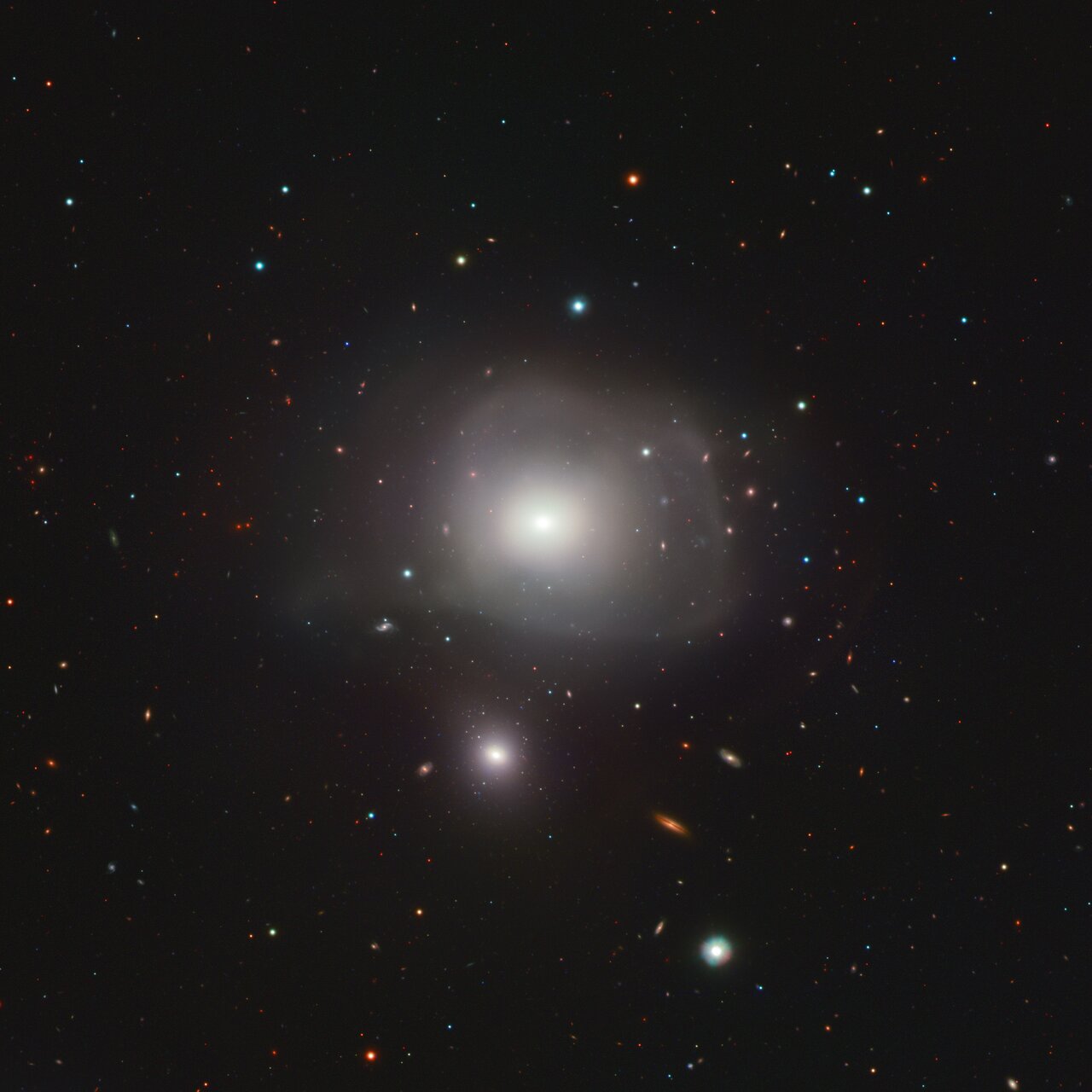Cosmo NGC 3640
This Picture of the Week shows NGC 3640, an unusual elliptical galaxy 88 million light-years away. The image, taken with the VLT Survey Telescope hosted at ESO’s Paranal Observatory, reveals a menagerie of galaxies of all shapes and sizes, ranging from slight blue smudges to the fried-egg shape of NGC 3640. But amidst this colourful cosmic neighbourhood, one thing stands out — this egg has a double yolk: a smaller galaxy that might be too close for its comfort.
Throughout their extremely long lifetime, galaxies change. As they soar through space, they may steal gas and stars from other galaxies, or even engulf and merge with them. After these events, galaxies can become distorted, as exemplified by the misshaped NGC 3640 and the diffuse light around it. The galaxy is then left with ‘scars’ that hint at a violent past, which astronomers can use to know its past and present history.
To trace the history behind this galaxy and its smaller companion, a team of astronomers at the Italian National Institute for Astrophysics used the VST to analyse their globular clusters, spherical and compact aggregations of stars bound by gravity. These usually contain some of the first stars created within a galaxy and can therefore act as fossil markers, revealing the galaxy’s history, even after merging events.
The results confirm that NGC 3640 has engulfed other galaxies before, an ominous sign for the smaller galaxy now in its path, NGC 3641. Yet, this small galactic underdog shows a distinct lack of distortions in its shape or the globular clusters within. This suggests that their interaction, while fast, is not happening close enough for NGC 3640 to pose a threat. NGC 3641 might be safe… for now.
